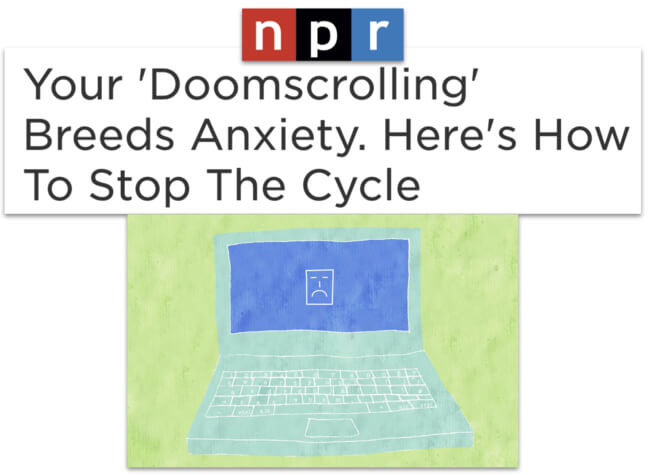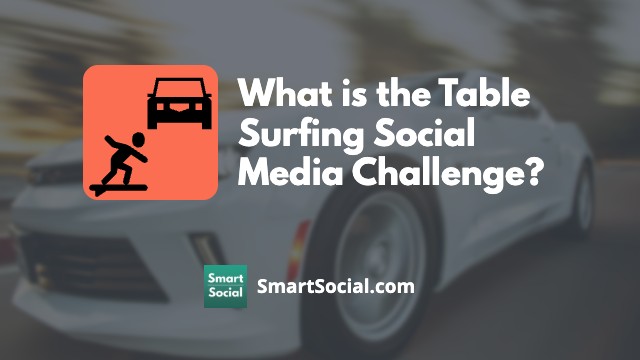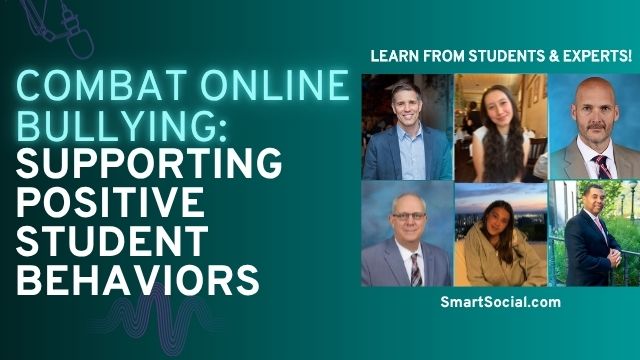Doomscrolling: 11 Experts Share Tips on How to Stop the Negativity
Green Zone App
(Click here to learn more)
Dangerous Social media challenge
(Click here to learn more)
Red Zone App
(Click here to learn more)
Gray Zone App
(Click here to learn more)

We know that we adults are just as bad as teenagers when it comes to “doomscrolling” or “doomsurfing.” Never heard of it? It’s the act of consuming an endless stream of negative online news. Many people can’t help it. We like to read into sad news, disheartening news, and news that is just downright depressing. So how do we end the cycle of doomscrolling for ourselves and teach our tweens and teens how to stop it as well?
We asked 11 experts to share their tips and thoughts on how to teach teens to stop doomscrolling, look for the positives, and teach them to recognize the negative impacts news and social media can have on their mental wellbeing.
1. As teenagers continue to develop, don’t be afraid to intervene

Saba Harouni Lurie, Founder, Take Root Therapy
While working with our kids to help them manage their relationship to news, social media, and doomscrolling, we can keep a couple of things in mind. First, if we're struggling ourselves to stop doomscrolling or to limit our social media usage, it's unrealistic for us to expect our teenagers to stop easily. This is even more true when we realize that their prefrontal cortex is still developing, which makes it even harder for them to manage impulse control.
Social media works hard to keep us plugged in, to keep us scrolling, and to keep looking at paid advertisements while we do so. So rather than expecting our teenage kids to be able to face this on their own, it may be helpful for us parents to intervene. This could look like setting a timer, having times when phones are not accessible (or to have WiFi shut down at certain times, or use an app that shuts the phone down, such as Offtime).
It may also be helpful to have discussions with your teen about how they feel while they're using social media, what triggers they might notice that make them want to log onto social media, and how social media operates. These types of authentic discussions may help them be more critical in their consumption and to continue forming healthy habits around technology and media as they transition into adulthood.
2. Explain cultivation theory and encourage the balance of positive stories

Michele Ramsey, Penn State Berks
Cultivation theory suggests that a primary danger of doomscrolling is that the more exposure we have to negative stories about the world, the more negative our perceptions of the world become. Researcher George Gerbner called this specific type of cultivation “mean world syndrome” and it can color not only how we see the world, but how we choose to interact with the world and the people in it.
To protect teens against allowing doomscrolling to shape their perceptions of the world, one thing we can do is explain cultivation theory to them, specifically pointing out the damaging impact of regular exposure to sad or disheartening stories on their perceptions of the world.
In addition, we can encourage them to balance those stories with other, more positive ones. Teaching this important theory of media literacy is key to helping make sure teens don't cultivate incorrect and overly-negative perceptions of the world.
3. Instead of Doomscrolling, subscribe to positive, feel-good blogs and websites
James Pearson, CEO and Small Business Evangelist, eVenturing Enterprises
I was once a serial doomscroller. But being one doesn’t mean you can’t overcome this toxic habit that can affect your mental health. Here’s one effective way to have a good relationship with social media and avoid doomscrolling:
Subscribe to newsletters, websites, and social media accounts that create a feel-good vibe.
Keeping your boundaries from catastrophic news can be tough. However, it will be much easier if you focus and surround yourself with websites that make the digital space a better place. Push that subscribe button and follow sites that promote positivity, gratitude, healing, kindness, or even a good laugh. This uplifting content will help you to conquer doomscrolling by filling your feed with feel-good materials. It requires time, effort, and willingness to feed your thoughts with positivity and maintain strong mental health. Thus, it is your responsibility to choose and manage what goes in and out of your mind. You need to be intentional and picky of sites or content that you are engaging. With this, it will help you avoid the dangers that you can get from doomscrolling.
4. Teach your teens to recognize doomscrolling for themselves and create their own power to close out of the apps
John Ross, President & CEO, Test Prep Insight

One of the best things we can do to help teens avoid doomscrolling is to lead by example. If all of the daily activities and life events teens ever experience are negative, this will feed their appetite for more negative news. What we need to do is show them positive experiences and fun activities, so they have a zest for life. That way when they get into a doomscroll, they will have the mindset and ability to say, “this is all too negative and I need to stop scrolling”, and close the app. You want them to do it of their own accord. Simply telling them to close the browser or app when there is too much negativity will never work!
Teens don't want to listen. Instead, we need to focus on building an attitude that is positive, so they don't want to be brought down. Take your teen to a concert, baseball game, watch funny movies together, take a random road trip somewhere fun, or just do something as small as making an unexpected run for ice cream. It doesn't matter what you do together, as long as you're doing something fun and positive. This will help nurture an outlook of positivity, so they will want to end a doomscroll, rather than being told to do so.
5. Lead by example

Claire Stapleton, Stapo's Thrifty Life Hacks
We need to teach the importance of self-care and switching off in schools. Education is important and kids need to know that consuming too much negative news will impact their mental wellbeing. It’s also important to practice what you preach and you can’t tell teens not to doomscroll if you’re constantly doing it yourself. I’m a self-confessed doomscroller. I know it does me no good, yet I continue to read the bleakest, most depressing news I can find. To try and overcome this, I have set some basic rules.
I have an 8PM curfew when it comes to my phone and I plug it in overnight in a different room. I find that this helps me to switch off in the evening and sleep. Doing this needs to become commonplace for us all because culturally we all need to make a change in order for the younger generation to learn that doomscrolling is unhealthy. It isn’t always possible to make tweaks like this but attempting to reduce your consumption is important.
It’s also good to talk openly about any benefits you’ve experienced by making a change. Explaining how much better your sleep is, how much more connected to the moment you feel, and how you now have more time to pursue your hobbies because you’re not constantly doomscrolling will impact the teens around us. By expressing the benefits, teens will see that putting their phone/laptop/tablet down can be positive.
6. Try a social media fast
Neil Roach, Boxroom Office
One approach to breaking the addiction to doomscrolling is to explain to the teenager that most apps are designed with gamification in mind. Teenagers don't like the idea of being controlled, so they might not like that most apps are designed to do exactly that.
What's more effective than this is a break from social media and doomscrolling. Challenge your teens to a 72-hour social media fast. Maybe get a trusted third party to change their passwords, so they can't accidentally relapse by ghosting to their favorite app.
At the end of the three days ask them if they felt any withdrawal symptoms as a result of not being able to go online. Then explain that the anxiety and unrest they felt was because they're psychologically addicted to data feeds of useless information that are of no real benefit to them.
7. Don't Sabotage Your Mental Health With Doomscrolling

Heinrich Long, Privacy Expert, Restore Privacy
Doomscrolling is a form of self-sabotage. It’s letting the internet steal your joy. It’s difficult to step away from the internet and social media, but what I find works is finding an offline activity to replace the time you spend on your phone. Make a solid plan, don’t allow any idle time to fill, because that’s when you’re going to be tempted to doomscroll, out of habit. Put your phone out of reach and go watch a movie, play with your dog, draw, or read a book. Teens may be comforted by their favorite show or a chat with a friend. They really need it.
8. Listen to a podcast or volunteer with a non-profit organization
Joseph Salim, Sutton Place Dental Associates
Doomscrolling is more prevalent than ever. Negative news and fear sell a lot more than positive events. As a result, we are continuously bombarded by them, changing how we think and operate. Our children are also exposed to it, and if we do nothing about this, their more malleable minds will suffer.
We need to consciously make efforts to tone down doomscrolling, and tune into sources of positivity such as Here's Something Good at iHeartRadio. This podcast inspires us to do good with useful tips, and shared experiences.
We need to overcome our fears and live life as though each day could be our last. We need to remember that what is most valuable is the legacies we leave behind. Nothing is more meaningful than striving to become a better person every day while touching the lives of others, and volunteering for nonprofits is a great way to accomplish this.
9. Teach your teens to manage and control their doomscrolling themselves
Clovis Chow, TimeOrganizeStudy
I think one way we can teach teens to end the cycle is for parents to regularly share happy or exciting news with their teens. This promotes positivity and shows teens that all news isn’t negative and sometimes we are only shown or fed the negative news headlines.
Another way is for parents to communicate with their child that they have the power to control what to do if they feel depressed. If they feel sad after reading a piece of news, immediately close the article. After all, teens can't be monitored 24/7 to prevent them from reading sad news. They have to learn how to manage it and control it by themselves to stop this vicious cycle.
10. Turn off push notifications

Khunshan S Ahmad, Co-Founder, InsideTechWorld.com
Push notifications are among the major reasons to have any of us addicted to our phones. They make us want to check different applications over and over again. You open the app to check that one notification and end-up spending hours scrolling through not just that one platform but also other mediums.
It's a psychological phenomenon, that once you enter a place even when you do not want to, you then do not want to leave it even if you want to — and vice versa. So we need to not enter an app at any cost, that's the first step.
One way you can teach your teens to end this cycle is by having them turn their push notifications off for specific apps to not get distracted, or use the iPhone’s Screen Time feature to block updates and notifications for a set amount of time. This will help end the cycle as your child will only be checking their phone and various apps actively, not passively.
11. Stop scrolling on social media in bed
Rex Freiberger, CEO, Gadget Review
It's incredibly easy to get caught in the doomscrolling void, especially when our social media circles tend to be an echo chamber filled with like-minded people. If everyone is struggling, it's easier to get stuck in that cycle. This can lead to you never really seeing the upside of anything. Instead of just being cautious or even a little cynical, you're always that way and can easily become depressed, disillusioned, and otherwise miserable.
Breaking the habit is hard. Make sure to not scroll social media in bed, for one. That's where most people do most of their doomscrolling. I'd also recommend setting time limits for yourself.
Doomscrolling in the news

‘As humans we have a ‘natural’ tendency to pay more attention to negative news,’ [explained one Harvard researcher.] This, along with social media algorithms, makes doomscrolling—and its impacts—almost inevitable. WIRED

So many of us do it: You get into bed, turn off the lights, and look at your phone to check Twitter one more time… You see that coronavirus infections are up. Maybe your kids can't go back to school. The economy is cratering… Still, you incessantly scroll though bottomless doom-and-gloom news for hours as you sink into a pool of despair. NPR
Conclusion
Everything starts with setting the example we want our teens to follow. We have all doomscrolled longer than we care to admit, but recognizing the trap and exiting out of the negative news is the first step in the right direction.
What tip above worked for you or your teen? Share with us in the comments.
Protect your family and enter for a chance to win cool prizes
Become a member or log in to learn more on this topic
Protect your family and enter for a chance to win cool prizes

., start learning from this page to earn points!*
Hello, I'm Josh, the founder of SmartSocial.com.
Don't leave this page until you fill out our feedback form that will appear after you learn from the resources...
Become a Very Informed Parent (VIP) to get our social media suggestions in your email every Tuesday & Thursday.



Hello, I'm Josh, the founder of SmartSocial.com. Protect your family by taking my 1 minute quiz
This quiz will help you understand how safe your family is


Schools & Districts: Partner with us to protect your community online
Our remote presentations (and website) teach over a million parents and students each year how to be safe so they can shine online. We teach students how their accounts can be used to create a portfolio of positive accomplishments that impress colleges and employers.


Join Our Smart Social Podcast
each week on iTunes
With over 500 episodes, Josh Ochs interviews psychologists, therapists, counselors, teachers, and parents while showing you how to navigate social media to someday shine online.
Listen on:



.jpg)
.jpg)
.jpg)


